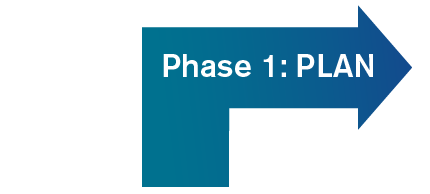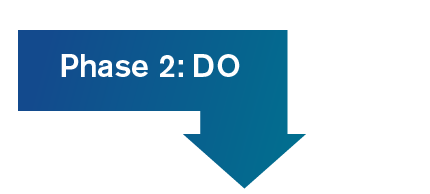Phase 3: Study
Study Results of the Program’s Improvement Plan and Submit the Self-Study Summary of Achievements
The third phase of the ACGME-I Self-Study process involves implementing the program’s improvement plan by continuing to collect data and evaluate how the program is progressing and improving in those areas in need of further development. This action takes place following submission of the Self-Study Summary and prior to the accreditation site visit.
Studying the effectiveness of improvement efforts, keeping accurate records of discussions, and sharing information between a core residency program and its associated subspecialty fellowship program(s) are key actions. Metrics and measurement are as important in improving educational programs as in diagnosing an illness. Every intervention that a program plans to address in an identified area of improvement should have a metric to allow for measurement. Too often, adequate measurement is not complete, making it difficult for the program to determine the effectiveness (or lack of) of an intervention. Ideally, the role of data collection aggregation and tracking progress should be assigned to an individual, or to a small group in which each is responsible for a particular area of improvement.
Prior to the accreditation site visit, and approximately 18 to 24 months following completion of the Self-Study, the program submits a Summary of Achievements that outlines the strengths of the program and the improvement outcomes that were achieved as part of the program’s improvement plan.
The time between submission of the Self-Study Summary and the accreditation site visit is deliberate to allow programs time to make improvements and conduct at least one Annual Program Review. The program review(s) that occur(s) during this period should assess the improvements made in the areas identified during the Self-Study process and will form the basis of the Self-Study Summary. Note that the Self-Study Summary asks that programs only summarize those improvement efforts that have been successful. Areas where there was no improvement are not included.




